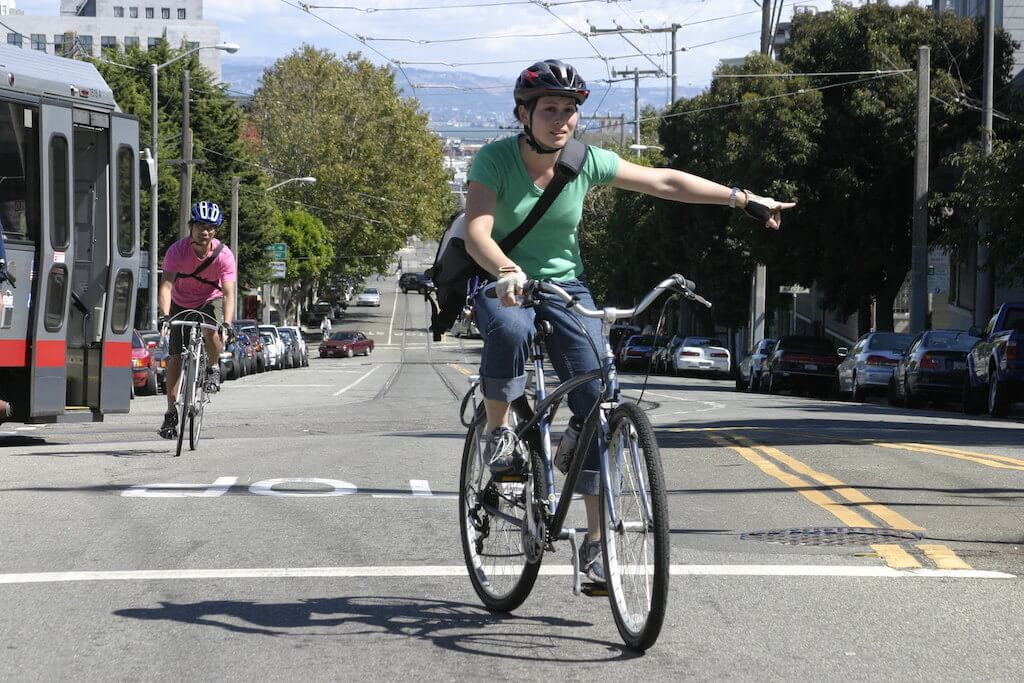Autumn Gear Guide
Find inspiration in our Gear Guide that will keep you out on your bike through wind or rain.
Download NowCycling enthusiasts, both seasoned riders and newcomers to the road, can enjoy safe and fulfilling experience on their two-wheel journeys. While athleticism, speed, and bravery are not prerequisites, understanding traffic dynamics and embracing one’s equal right to the road are vital. Also head into this assuming that other road users, yes drivers of cars and […]
Cycling enthusiasts, both seasoned riders and newcomers to the road, can enjoy safe and fulfilling experience on their two-wheel journeys. While athleticism, speed, and bravery are not prerequisites, understanding traffic dynamics and embracing one’s equal right to the road are vital. Also head into this assuming that other road users, yes drivers of cars and trucks especially, will do the wrong thing because that is, statistically speaking, what usually happens. But, control what you can control. Here, we explore ten essential tips for safe cycling.
Adult bicyclists should primarily inhabit the road, avoiding the allure of the sidewalk. Sidewalk cycling may seem like a convenient choice, but it amplifies conflicts for cyclists, motorists, and pedestrians alike. The act of riding on the sidewalk can, counterintuitively, increase the risk of accidents due to turning and crossing conflicts. Furthermore, sidewalks present a multitude of hazards, from poles to posts and overhanging branches.
Cyclists must adhere to the rules of the road, as these regulations foster predictability and harmony among all road users. Violating these rules not only increases the likelihood of collisions but also fosters resentment among fellow road participants. The fundamental rules include yielding to traffic before entering a road, riding in the same direction as traffic, obeying traffic control devices, and adhering to the “first come, first served” principle.
Effective integration in intersections is key to a safe cycling journey. Always select the lane that aligns with your destination and turn left from designated left-turn lanes. Riding straight in a right-turn-only lane should be avoided at all costs. When approaching an intersection, merging into the main traffic flow from a wide lane or bike lane is the safest practice, as crosswalks should be bypassed when crossing a busy intersection.
Riding confidently within your lane and when taking the entire lane is crucial, as it prevents motorists from attempting to squeeze past without changing lanes. Cyclists should communicate clearly with drivers by positioning themselves to the left in a lane, signaling that it’s too narrow to share. This visibility encourages motorists to provide ample passing clearance and ensures that cyclists have a safe escape route if a motorist comes too close. When required take the entire lane with confidence and return to the right-side lane when risk is avoided.
Being a part of the traffic system necessitates predictability. Communication is the key to predictability, which can be achieved by signaling turns and lane changes. When motorists understand a cyclist’s intentions, they are more likely to cooperate and ensure a safe journey for all. Here is an article on bike hand signals, if you don’t know them, you should!

The road environment is dynamic, while markings on the roadway are static. Cyclists must interpret cues from their surroundings, as bike-specific markings may not always position them optimally. Ensuring visibility to crossing and turning traffic often requires departing from bike lanes and moving to the left side of the general use lane. Riding within 5 feet of parked cars, or the “door zone,” is risky, and passing a queue of stopped traffic on the right should be done cautiously. Never attempt to pass a large truck on the right.
Understanding traffic flow can empower cyclists to anticipate and position themselves optimally. This knowledge allows riders to take advantage of traffic controls and road features, ultimately enhancing their safety and the flow of traffic.
On the road, courtesy is key. Cyclists should respect their fellow road users, maintaining control of their space while allowing motorists to pass when appropriate. A friendly wave when others are considerate can go a long way. At red lights, cyclists should stop behind motorists who arrived first rather than pulling to the front.
Despite the occasional negative encounter, most interactions with fellow road users are positive. When faced with honks or yells, it’s best to maintain composure, offer a friendly wave, or simply ignore the negativity. Most offenders will move on, and cyclists can continue their journey with a positive mindset.
Cycling provides a unique and enjoyable mode of transportation. Interacting with other road users can be likened to a dance, with cyclists taking the lead. The better one communicates and operates predictably, the smoother this dance becomes. Those who ride with mindfulness and a friendly attitude towards fellow road users seldom experience close calls or hostility, ensuring that cycling remains a fun and enjoyable activity.
Find inspiration in our Gear Guide that will keep you out on your bike through wind or rain.
Download Now
Leave a comment